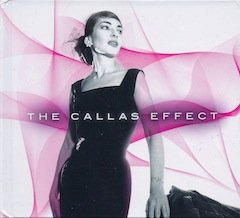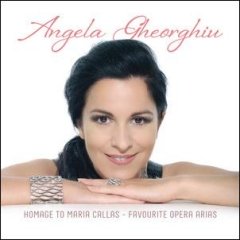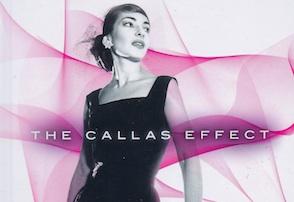
So great is the Callas mythology, and so important her artistic legacy, that 37 years after her death, her many studio and live recordings remain the biggest sellers in EMI’s catalogue. Perhaps the desire to capitalize once more on her fame, before copyright laws loosen entirely EMI’s monopoly on the recordings she made in and after her prime, is partially responsible for the release of two packages that seem designed to maintain and strengthen the legend.
The first, The Callas Effect, is a thick, hardbound Callas compilation that includes two CDs and a DVD. The CDs’ 29 arias, all but one recorded for commercial release, have been issued and reissued many times over.
What is new is an EMI-commissioned DVD that purports to set the record straight on Callas’ career. One segment focuses on her most notorious scandal, her walkout after the first act of a performance of Norma, whose audience included the President of Italy. Also of value are a small number of rarely seen photos, and a minimally critical nine-page essay and one-page chronology by the incomparable opera commentator and former drag diva Ira Siff.
Listen To The Music
Callas - Gounod: The Jewel Song from FaustGheorghiu - Gounod: The Jewel Song from Faust
Related Article
Free MP3 - Angela Gheorghiu: "Donde Lieta Uscì" from Homage to Maria Callas
As if to prove the existence of The Callas Effect, on its heels comes soprano Angela Gheorghiu’s slimmer, hardbound package, Homage to Maria Callas: Favourite Opera Arias. Gheorghiu’s first studio recital release in six years, recorded at an age when Callas had already ceased performing in opera productions, includes 13 arias, five of which are also on The Callas Effect. In addition, besides the obligatory glamour shots, Gheorghiu’s homage promises a computer-accessible “Habanera” duet between the two divas. While the album has its merits, I find the duet gimmick even more of a ridiculous exercise of ego than I had thought possible.
What is most surprising is how few tracks either album devotes to the bel canto versatility that set the seal on Callas’ greatness. The Callas Effect contains just one aria by Rossini and two by Bellini; in addition, there are three coloratura arias by Leo Delibes, Gounod, and Ambroise Thomas. (The album includes Verdi’s “Ah, fors’è lui” from the famed live Lisbon performance of Verdi’s La Traviata, but omits its “Sempre libera” coloratura cabaletta, undoubtedly because the high E flat climax is short and shaky.) There’s nothing from two of Callas’ most famous coloratura roles, Bellini’s La Sonnambula and Donizetti’s Lucia di Lammermoor.

Gheorghiu’s homage contains only the Gounod track, one of the two Bellini items, and the scene from La Traviata. While Gheorghiu does include “Sempre libera,” she skips the E flat entirely. Callas preferred to abandon roles rather than skip notes that she knew everyone was waiting for.
Gheorghiu sings quite well, and the recording engineers do their best to mask the shallowness of her lower and middle ranges. If nothing on the disc suggests that Callas’ supremacy in this repertoire has been equaled — “Mon coeur s’ouvre à ta voix” (from Saint-Saëns' Samson et Dalila) is a major misstep, and the “Habanera” from Carmen hardly sounds dangerous — most of Gheorghiu’s renditions are expertly done and quite beautiful. “Poveri fiori” from Cilea’s Adriana Lecourveur — an opera far more associated with verismo miracle Magda Olivero than Maria Callas — is especially moving.
As I listen to Gheorghiu sing the Jewel Song from Gounod’s Faust, and compare it to Callas’ 1963 recording, made when she was past her best, I don’t think there’s any question whose performance contains the most varied, vibrant, and convincing response. Am I alone in feeling that the anticipation and excitement Gheorghiu attempts to inject into her version sound contrived by a diva with every nerve on edge, as if she had drunk far too many cups of coffee? Snarky perhaps, but it accurately describes how the performance strikes me. Of the two, Callas is the artist who my heart declares sings true.

